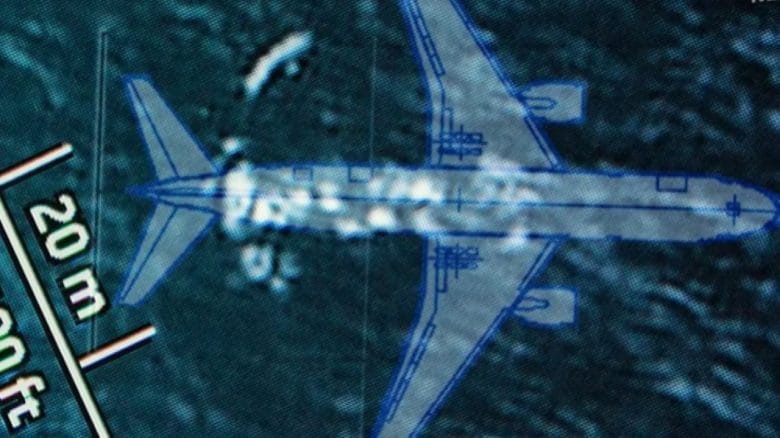More than a decade has passed since Malaysia Airlines Flight MH370 disappeared on March 8, 2014, during a routine journey from Kuala Lumpur to Beijing. The Boeing 777 carried 239 people and vanished from radar screens, sparking what became the largest and most expensive multinational search effort in aviation history. Despite years of investigation, official reports, and ongoing speculation, the fate of MH370 remains one of the greatest unsolved mysteries of modern times.
Over the years, numerous theories have emerged, ranging from technical failures and human intervention to more speculative ideas involving unexplored regions of the ocean floor. Recently, some independent researchers and explorers have suggested unusual findings from deep-sea investigations—objects resembling relics, unexplained sonar signals, and geological formations that some interpret as “artifacts.” While such claims remain unverified, they highlight the powerful intersection of science, archaeology, and imagination that continues to surround the case.
The Disappearance of MH370

The last official contact with MH370 occurred less than an hour after takeoff, when communications ceased unexpectedly. Satellite “handshake” data later indicated that the aircraft veered far off its original flight path, heading into the remote southern Indian Ocean.
International search teams deployed advanced sonar, underwater drones, and acoustic monitoring to scan vast stretches of seafloor. Despite locating some confirmed debris along coastlines in the western Indian Ocean, the main wreckage and flight recorders remain missing. This lack of closure has kept the tragedy in the global spotlight, sustaining both scientific inquiry and public speculation.
Reports of Unusual Ocean Discoveries

As part of unrelated oceanographic surveys and exploratory dives, some researchers have reported encountering unusual formations in areas overlapping with suspected crash zones. Among the claims:
-
Metallic fragments that appeared unusual in composition.
-
Patterns etched into stone-like formations that some likened to symbolic markings.
-
Sonar signals that produced irregular acoustic signatures.
While intriguing, these reports have not been confirmed by peer-reviewed studies or official investigative teams. Marine geologists caution that natural phenomena—such as basaltic ridges, manganese nodules, and hydrothermal vent structures—can easily resemble man-made artifacts to the untrained eye. Similarly, sonar interference and the unique acoustics of deep trenches can produce signals that seem mysterious but are scientifically explainable.
Archaeological Speculation vs. Scientific Caution
The suggestion that archaeological relics might coexist with MH370 search areas has sparked debate. For some, it evokes humanity’s fascination with lost civilizations and the ocean as a repository of forgotten history. Comparisons are drawn to legendary narratives such as Atlantis, or famous maritime discoveries like the Titanic.
However, experts emphasize the importance of separating cultural imagination from scientific evidence. Without verified samples, documented coordinates, or analysis published in academic journals, such claims remain speculative. Skeptics argue that conflating aviation investigation with unverified archaeological theories risks overshadowing the real human tragedy and undermining efforts to uncover factual answers.
Why the Ocean Fuels Imagination

Part of the reason MH370 continues to inspire theories lies in the symbolic power of the ocean itself. Covering more than 70% of Earth’s surface, the deep sea remains largely unexplored. Geological structures can appear otherworldly, and wreckage from centuries of human seafaring lies scattered across its depths.
History shows that major underwater discoveries—from sunken cities to shipwrecks—have reshaped understanding of past civilizations. The idea that the search for a modern aircraft could inadvertently reveal relics of an ancient world is compelling, even if unproven. This intersection of aviation mystery and archaeology highlights both the limits of human knowledge and the allure of the unknown.
Families Still Seeking Closure

For the families of the 239 people aboard MH370, speculation is secondary to truth. Loved ones have spent more than a decade demanding answers and accountability. Annual memorials are held, and international advocacy groups continue to call for renewed search efforts in areas not yet fully examined.
While alternative theories capture headlines, official investigations remain focused on data analysis, satellite tracking, and oceanographic mapping. Authorities stress that any credible lead must be grounded in verifiable evidence before it can contribute meaningfully to the case.
Symbolism and Legacy
The enduring fascination with MH370 demonstrates how modern mysteries echo ancient ones. Just as archaeological ruins ignite curiosity about lost cultures, aviation’s most perplexing disappearance embodies uncertainty in the technological age. Both speak to humanity’s desire to explain the unexplained and to find meaning within tragedy.
Even if reports of deep-sea “artifacts” prove to be natural formations, their symbolic resonance reminds us that exploration is as much about confronting imagination as it is about gathering data. The mystery of MH370 underscores the vastness of the ocean and the persistence of human inquiry.
Moving Forward
Future progress may depend on advancements in marine technology. Improved underwater drones, more accurate sonar mapping, and new satellite-tracking methods could one day yield definitive answers. International cooperation remains essential, as the scale of the search exceeds the capacity of any single nation.
Meanwhile, researchers continue to balance skepticism with open-mindedness. While cautioning against unverified claims, many acknowledge that the mysteries of the deep ocean deserve study in their own right—whether or not they ultimately intersect with the fate of MH370.
Conclusion
The disappearance of Malaysia Airlines Flight MH370 remains one of the defining enigmas of modern aviation. After more than a decade, its story is layered with grief, science, and speculation. While some explorers suggest archaeological anomalies near suspected crash zones, no verified evidence supports such claims.
What endures is the broader truth: the Indian Ocean’s depths still hold countless secrets. Whether these secrets include the wreckage of MH370, remnants of forgotten history, or simply the marvels of geology, the mystery continues to challenge both science and imagination.
For the families seeking closure, the hope remains that future investigations will yield clarity. For the world, the case stands as a reminder that even in an age of advanced technology, the natural world retains mysteries as vast as the ocean itself.
